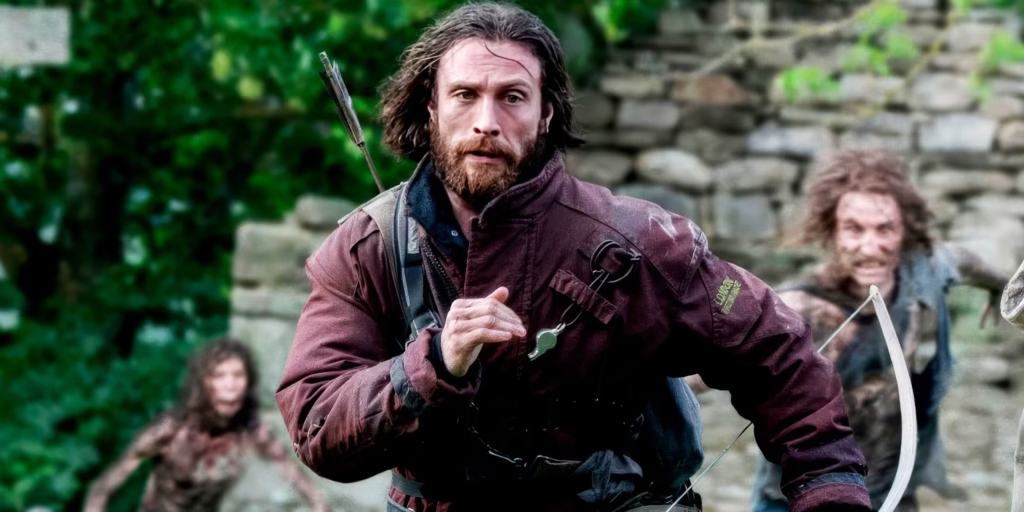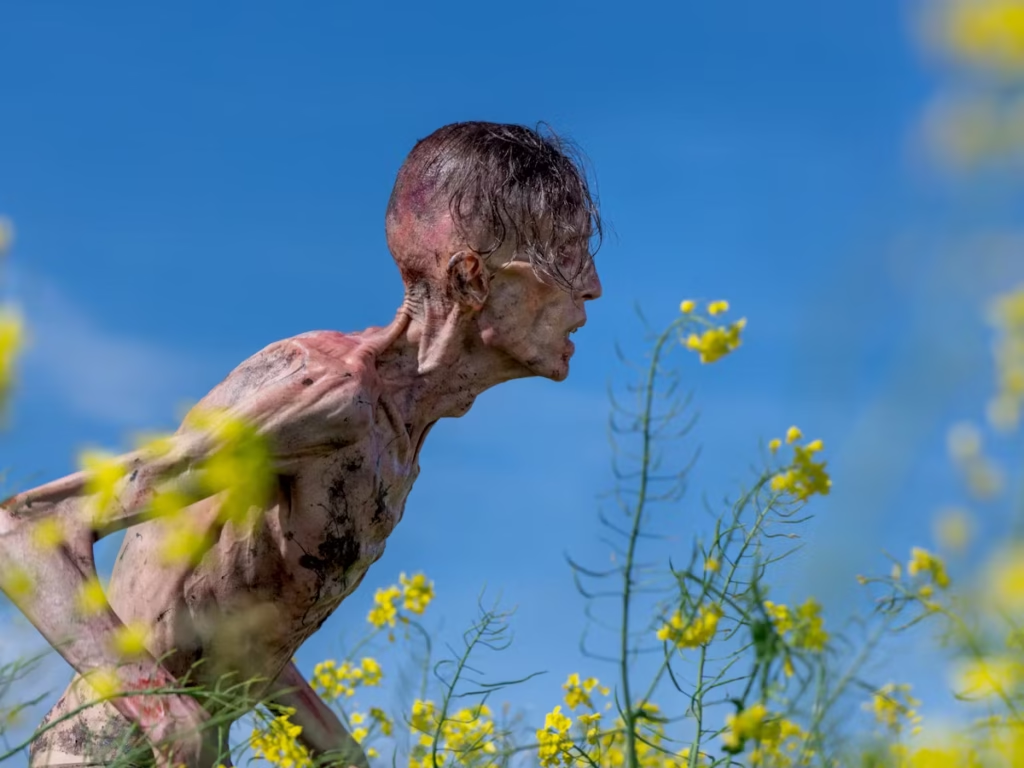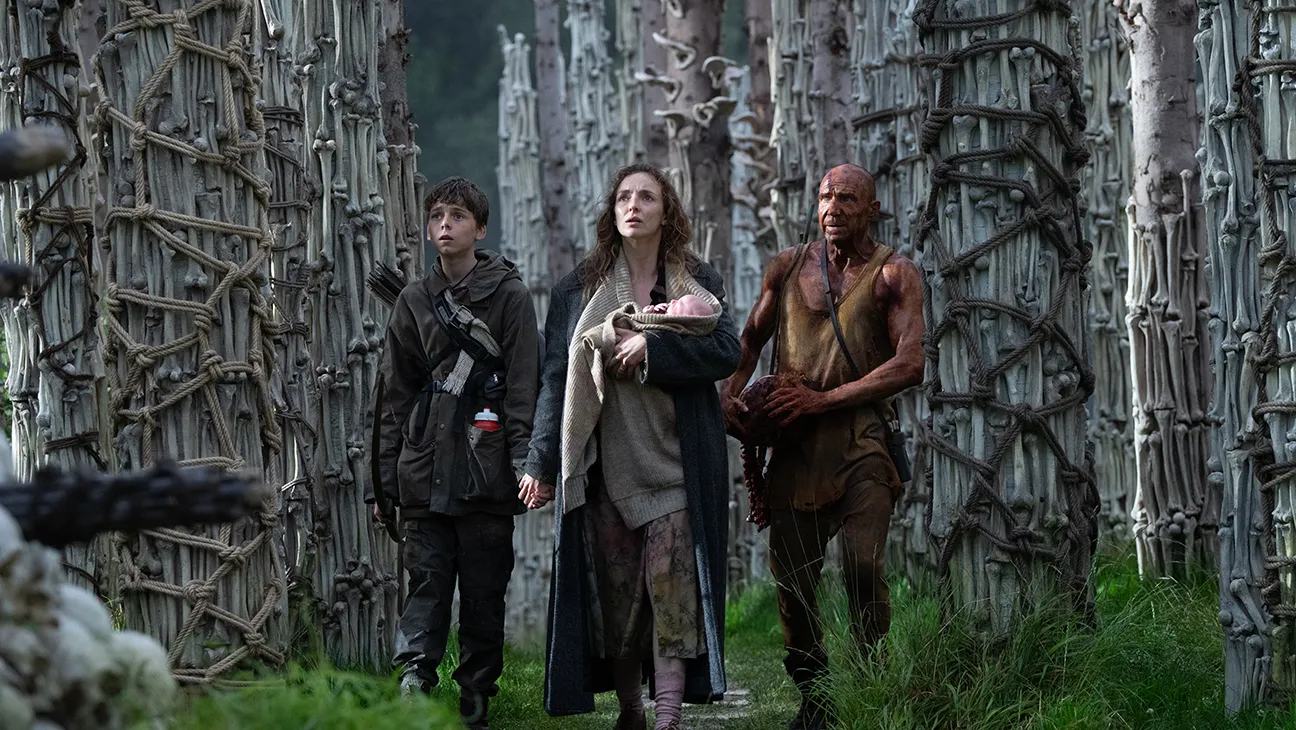28 Years Later Review: Return of the Rage Virus and the Monster Mythos
This 28 Years Later review explores how the film reawakens the chilling world of the Rage virus with a bold, genre-blending continuation that merges horror with medieval survivalist themes. Directed by Danny Boyle and penned by Alex Garland, the film is a long-awaited sequel to the original 2002 cult hit. It paints a harrowing picture of a dystopian Britain abandoned by the world and quarantined from civilization. While it dazzles with stylistic finesse and haunting adversaries, the film stumbles when it leans too heavily into sentimentality and disjointed storytelling.
Post-Apocalyptic Britain in 28 Years Later: A World Rebuilt from Ruins
In this 28 Years Later review, we explore how the story opens in a starkly altered Britain, where a small island community survives in near-medieval conditions, isolated from the infected mainland. The survivors, cut off for decades, have learned to live with rudimentary tools, crafting weapons from scratch and burning wood for fuel. It is in this haunting and primitive environment that we meet Jamie, played with stoic strength by Aaron Taylor-Johnson, and his ailing wife Isla, portrayed by Jodie Comer.

This setting offers an evocative contrast to the fast-paced modern terror of the original film. Their son Spike is at the center of a traditional rite of passage: a hunting expedition to the infected mainland to make his first kill. But it is this journey that exposes deeper horrors, both external and internal.
Zombie Horror in 28 Years Later: A Visually Striking, Intense Experience
Danny Boyle proves once again that his command over kinetic visuals remains unmatched. The hunting sequences, framed with chaotic energy and visceral tension, thrust viewers directly into the chaos of a world still overrun by the virus. The infected have evolved—some crawl like beasts, others display intelligence and alarming agility. Though still technically not zombies, their horrific transformations heighten the threat level with each encounter.
The infected, now dubbed “Slow-Lows” and other mutated forms, burst into geysers of blood when wounded, their bodies caked in dirt and decay. These scenes are expertly constructed, with frantic camera work and pulse-pounding urgency. Boyle’s visual language captures the primal dread of this desolate world.
28 Years Later Review: Politics, Isolationism, and Thematic Depth

As noted in this 28 Years Later review, the narrative attempts to layer in political subtext, referencing a quarantined Britain left to rot while European powers enforce maritime boundaries. French and Swedish vessels patrol the waters, ensuring no one leaves or enters. This isolationist theme offers potential relevance in today’s geopolitical climate, but it’s touched on only briefly, lacking the follow-through needed to make it truly impactful.
28 Years Later Review: Family Bonds and Emotional Disconnect
The relationship between Jamie, Isla, and Spike is designed to provide emotional depth. However, it often comes off as hollow, with Isla relegated to a passive, bedridden figure. Spike’s character, while central to the narrative, feels underdeveloped and emotionally flat. A bizarre twist involving a pregnant infected woman stretches plausibility, even within the horror genre’s boundaries.
At its weakest, the film resembles a more stylized and ambitious cousin to other recent post-apocalyptic media, such as The Last of Us, but without the emotional gravity that made those stories resonate.
Ralph Fiennes: The Undeniable Heart of the Film
It’s only when Ralph Fiennes enters the narrative as Kelton—a once-doctor now perceived as a madman—that the film transforms into something deeply compelling. Painted in iodine, living in solitude on the mainland, Kelton greets the visitors with eerie politeness and haunting wisdom. He introduces them to his creation: a Memento Mori temple constructed from bones and skulls, each representing a lost soul, not a monster.
As highlighted in this 28 Years Later review, Fiennes plays Kelton with eerie warmth and tragic humanity, blurring the line between madness and compassion. His presence elevates the film, making the final act more psychological and introspective. His character becomes a philosophical lens through which to view the horror, and the ambiguity of his sanity leaves a lasting impression.
Artistic Symbolism and Haunting Flourishes
Stylistic choices, like the recurring audio of Rudyard Kipling’s war poem Boots, add eerie historical resonance. Visions of historical conflicts flash across the screen, linking past violence with the present chaos. Yet these ambitious touches, while visually compelling, often serve more as garnish than substance, leaving thematic threads dangling.
Setting the Stage for a New Trilogy
“28 Years Later” is the first installment in a new trilogy. The next film, titled 28 Years Later: The Bone Temple, has already been filmed and is scheduled for release in January. With this promising title and the strong foundation laid by Fiennes’s character, there is hope that future entries will refine the narrative, strengthen emotional arcs, and fully realize the potential of this world.
Final Verdict: Ambitious but Flawed
“28 Years Later” is an ambitious, uneven, and often mesmerizing expansion of its iconic predecessor. It melds striking visuals, grotesque horror, and philosophical musings into a unique cinematic experience. While the emotional threads and political undertones may not land as effectively as intended, the film remains a must-watch for fans of the genre, buoyed by Ralph Fiennes’s magnetic performance.




